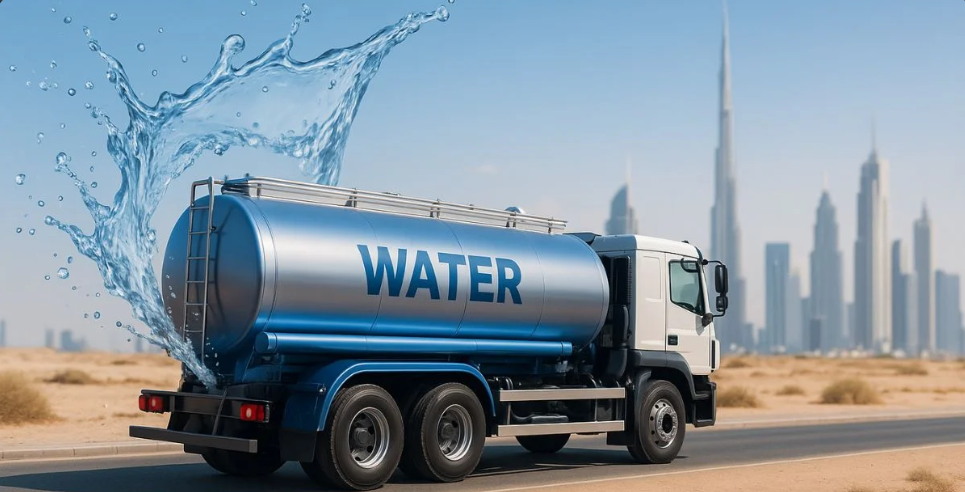Water is a critical resource, and its availability is vital for everyday life, especially for households, businesses, and industries. In many areas, access to reliable water can be a challenge, particularly where local water infrastructure is limited or unreliable. In such cases, sweet water supply services provide a vital solution to ensure consistent access to clean, safe water. However, ensuring a steady and reliable sweet water supply requires careful planning, choosing the right supplier, and ongoing management.
In this post, we’ll explore practical steps and considerations to ensure a steady and reliable sweet water supply for your needs.
What is Sweet Water Supply?
A sweet water supply refers to the provision of clean, potable water that is free from harmful contaminants. It is sourced from regulated water treatment plants or other safe sources, and it is purified through various filtration and disinfection processes to meet health and safety standards. The water is then delivered in large quantities via tanker trucks to locations where regular water sources may be insufficient, unreliable, or unsafe.
Sweet water is essential in residential, commercial, and industrial sectors where maintaining a clean and consistent water supply is necessary. Whether it’s for drinking, sanitation, irrigation, or industrial use, a reliable sweet water supply ensures that water needs are met without interruption.
Why is a Steady Sweet Water Supply Important?
Access to a steady and reliable sweet water supply is critical for a variety of reasons:
- Health and Hygiene: Consistent access to clean water ensures proper sanitation and helps prevent waterborne diseases, which can occur when contaminated water is used for drinking or hygiene.
- Agriculture: Water is essential for irrigation, especially in drought-prone areas. A steady water supply ensures the survival and growth of crops.
- Industrial Operations: Many industries require a constant supply of water for manufacturing, cooling, cleaning, and processing. Interruptions in water supply can lead to costly delays and operational inefficiencies.
- Emergency Preparedness: In emergencies like natural disasters or water supply disruptions, having access to an alternate water supply ensures that essential services can continue functioning.
How to Ensure a Steady and Reliable Sweet Water Supply
1. Choose a Reputable Sweet Water Supplier
The first step in ensuring a steady supply of water is to choose a reliable sweet water supply provider. Look for a supplier with a proven track record and a reputation for delivering clean water consistently. The supplier should have experience in serving your specific water needs, whether residential, commercial, or industrial.
A reputable supplier will:
- Provide water that meets or exceeds health and safety standards.
- Have a fleet of well-maintained tankers capable of delivering water on time.
- Offer flexible delivery schedules to meet your specific needs.
- Have a responsive customer support team available to address issues as they arise.
Before choosing a supplier, take the time to read reviews, check testimonials, and gather recommendations from other customers to ensure you are working with a trustworthy provider.
2. Assess Your Water Needs
Understanding your specific water requirements is crucial for ensuring a steady sweet water supply. The amount of water you need may vary depending on factors such as the size of your household, business operations, or industrial processes. Accurately assessing your needs will help you determine the quantity of water to be supplied and the frequency of deliveries.
Some key considerations include:
- Volume: How much water do you need on a daily, weekly, or monthly basis? This will depend on your consumption patterns, such as household use, business operations, or agricultural irrigation needs.
- Peak Demand: Consider the times when water demand may be higher, such as during the summer or peak operational hours. Ensure that the supplier can accommodate your peak demand periods.
- Contingency Needs: Plan for situations where your water needs may increase due to unforeseen circumstances, such as a sudden surge in activity, construction, or an emergency.
By having a clear understanding of your water needs, you can work with your supplier to develop a plan that ensures you have a steady and reliable supply.
3. Establish Clear Communication with the Supplier
Effective communication with your sweet water supply service provider is essential for maintaining a steady water supply. Make sure to establish clear lines of communication regarding:
- Delivery Schedules: Confirm regular delivery times and ensure they are aligned with your water needs. The supplier should notify you in advance of any changes to the schedule.
- Water Quality: Ensure that the supplier meets all local water quality regulations and can provide documentation or certifications verifying the purity and safety of the water.
- Emergency Support: Discuss contingency plans in case of water supply disruptions or emergencies. A good supplier will be able to provide emergency deliveries or backup solutions when needed.
Maintaining a relationship with your supplier ensures that any issues are promptly addressed and resolved, helping you maintain a steady water supply without interruption.
4. Plan for Seasonal and Emergency Water Needs
In some regions, water supply can be affected by seasonal variations, such as droughts or heavy rainfall, which can put strain on local resources. In these cases, it’s important to plan for such fluctuations in demand.
For example:
- During Droughts: If your area is prone to droughts, you may need to secure a larger water supply ahead of time, as water availability may decrease.
- In Emergency Situations: Natural disasters, accidents, or infrastructure breakdowns can disrupt water supply systems. Having an emergency plan in place that includes access to a sweet water supply ensures that you have water when traditional systems fail.
By planning for seasonal and emergency variations, you can avoid running out of water during critical times.
5. Implement Water Conservation Practices
While securing a steady sweet water supply is essential, practicing water conservation within your household, business, or industry can help reduce overall demand and ensure that the available water supply is used efficiently. Simple conservation measures can reduce your water usage and extend the availability of your supply.
Some water-saving tips include:
- Install Water-Efficient Fixtures: Use low-flow faucets, showerheads, and toilets to reduce water consumption without sacrificing comfort or efficiency.
- Recycling Water: Consider water recycling systems that can help treat and reuse water for non-drinking purposes, such as irrigation or industrial cooling.
- Monitor Water Usage: Regularly track your water consumption to identify areas where you can make improvements or reduce waste.
By adopting water-saving practices, you can reduce the strain on your sweet water supply while promoting responsible water usage.
6. Regular Water Quality Testing
Even with a reliable sweet water supply service, it’s important to regularly test the water quality to ensure that it continues to meet health and safety standards. Water quality can fluctuate over time due to changes in source water or treatment processes, so routine checks are essential.
Key parameters to test for include:
- Microbial Contamination: Ensure that the water is free of harmful bacteria, viruses, and parasites.
- Chemical Contaminants: Test for heavy metals, pesticides, chlorine, and other chemical contaminants that could affect water safety.
- pH Levels: Monitoring the pH of water ensures it is neither too acidic nor too alkaline, which could impact its safety and taste.
Routine testing by your supplier, as well as independent testing if needed, helps guarantee that your water remains safe for consumption and use.
Conclusion
Ensuring a steady and reliable sweet water supply is essential for maintaining the health, safety, and efficiency of any household, business, or industrial operation. By choosing a reputable supplier, accurately assessing your needs, maintaining clear communication, planning for emergencies, and adopting water conservation practices, you can ensure that your water supply remains consistent and reliable. Regular water quality testing further ensures that the water you receive is safe and clean, providing peace of mind and supporting long-term sustainability.






